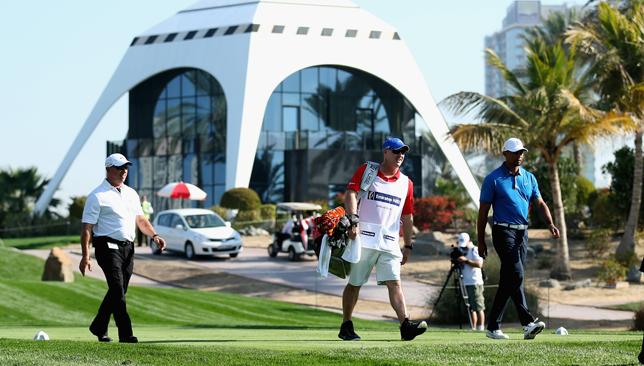
Twenty-five years might not amount to much in the context of a sport as old as golf, or if you compare it to tournaments like the Open Championship or the South African Open, which have been around for more than a century.
But there can be no denying the fact that it is a major milestone for the Omega Dubai Desert Classic.
That’s because, even though the first Open Championship was played in 1860 and the inaugural US Open was held in 1895, these tournaments don’t represent the entire golfing history of their regions.
Golf was played in Britain and the US even before these championships were instituted. But that’s not the case with the Dubai Desert Classic.
The tournament, and the host course, Emirates Golf Club, make up the first chapter of golf’s history in the Middle East.
Of course, the sport was played by expats before, but not in the form that we all are so used to now. When the Majlis course was launched in 1988, it was the first green golf course in the region, and before the 1989 Desert Classic, no professional golf tournament had ever taken place in this part of the world.

The golf course was the vision of HH Sheikh Mohammed bin Rashid al Maktoum, Vice President and Prime Minister of UAE and Ruler of Dubai, and so was the tournament.
He wanted to build a miracle in the desert and succeeded in doing so. He also believed there could be no better way of letting the world of golf know what Dubai had in store for them than conduct a world-class golf tournament.
The first Desert Classic was played from March 2-5, 1989. It was called the Karl Litten Desert Classic that year in honour of the golf course designer.
Ever since then, the tournament has done an admirable job in showcasing the Emirates to the world. This was perhaps best exemplified by the iconic photo shoot of Tiger Woods hitting balls from the top of the Burj Al Arab helipad in 2004.
The resultant pictures made it to front pages of thousands of newspapers across the globe, and is still considered one of the greatest sports PR stunts of all time.

And as the golf course and the tournament grew, the whole city also grew around it.
Woods, who is playing his seventh Desert Classic having first come to the Emirates in 2001, reminisced on Wednesday: “It’s fantastic to see the growth from when I first started.
“Talk about the eighth tee… it used to be a pretty simple tee shot. You had the buildings that looked like it had two kind of dumplings on top, and all you had do is hit it based on wind, go at the right one or go at the left one, and now you have a huge skyline there.
“It was that and the Hard Rock Cafe, and those were the only three buildings that existed out here. Today, you see three separate skylines which is just phenomenal and that too in such a short period of time.”
The centerpiece of this whole success story has to be the Majlis course.

Obviously, various other factors have helped the tournament over the years, including the fact that it has always managed to attract the greatest players of that time, but Litten’s design has played a major role.
There’s been hardly a Desert Classic that has lacked in drama. Woods lost the chance to win in his first attempt with a double on the 18th on Sunday, while Ernie Els denied Miguel Angel Jimenez in 2005 with an eagle on the last.
The closing stretch of 16, 17 and 18 is surely one of the most exciting threesome of holes in world golf, where birdies and eagles have created almost as many heroes as the number of hearts they have broken with bogeys and doubles.
We should expect more of the same this year.